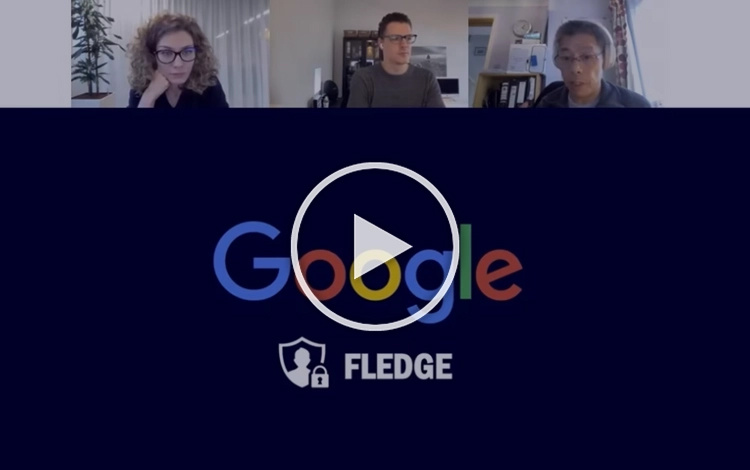What is Google's Privacy Sandbox and What Do Digital Marketers Need to Know?
by Anthony Botibol on 22.6.2023

*In July 2024, Google announced the cancellation of its plans to deprecate third-party cookies in Chrome, opting instead for a new approach that empowers users to make informed choices about their data across the web. This article was written prior to this announcement.
Google’s Privacy Sandbox is an initiative by Google to create or more privacy-centric way for brands to advertise to customers and prospects, without the need to rely upon third-party cookies, and therefore uphold better privacy rights of consumers.
Essentially, born from modern data protection regulations that require explicit consent for a brand to market to an individual consumer, the Privacy Sandbox solutions represent a significant shift away from the traditional ways that advertisers bid on audiences, retarget existing customers, and measure acquisition performance across the internet – ultimately the demise of third-party cookies.
While Apple had already started to block third-party cookies with Safari, as had Mozilla with Firefox, Chrome is now set to follow the same lead, however with Chrome being the world’s most popular browser, with 63.5% market share worldwide in April 2023, the need for marketer’s to better understand how to utilize the many solutions within the umbrella of Google’s Privacy Sandbox is huge. Once you add the market share of Safari users (24.3%) and Firefox users (2.77%), the end result is that suddenly just one browser in 10 will support the technology that has formed the foundation of online advertising for the past 27 years.
The functionality that will be potentially lost, or re-engineered, includes targeting, measurement, frequency capping, attribution, campaign organization, and dynamic creative organization.
At the time of writing, Google’s own roadmap states that they will be fully phasing out third-party cookies from Q3 of 2024*, while 1% of Chrome users will be moved into a non-third-party cookie experience from as early as Q1 2024:

* On 23 April 2024 Google announced a third delay to the full removal of third-party cookies following criticism from the UK's Information Commissioners Office (ICO) and Competition and Markets Authority (CMA). The timeline has therefore been pushed to Q1 2025 and the most up-to-date timeline can be checked here.
When can marketers start testing with Google’s Privacy Sandbox APIs?
Pre-launch testing for the majority of the Privacy Sandbox APIs has actually been available to opt into since the start of 2022. For the ability to show relevant content and adverts to audiences, there are two of the tools available that matter most:
- Topics API – this is to enable ‘interest-based advertising (IBA) without the need to track any of the sites that a customer or prospect has visited. This, therefore, preserves the privacy of a user by not surfacing this data to adtech, while enabling an advertiser to use ‘inferred interest’ that Google itself has determined based on individual browse history. This will therefore be how marketers build targeted audiences in the future for display advertising.
- Protected Audience API (formerly known as Google FLEDGE) – this is the proposal to enable retargeting without third-party cookies, and ultimately places a lot more demand on the individual browser to display an advert based on ‘interest groups’ that a user is put into when they visit an advertiser website.
As Google states, these are both in a ‘pre-launch testing’ phase, with general availability planned for Q3 of 2023. The timeline for testing, or moving into, a non-third-party cookie ecosystem is one that marketers and businesses should now be at an advanced stage with. Particularly enterprise brands with larger advertising spend, and who are mostly reliant on third-party audiences – these are the businesses who are most at risk when third-party cookies are fully deprecated.
How are marketers preparing for Google’s Privacy Sandbox?
Well, not very well! In our own recent study of 319 CMO’s and marketing leaders from across the world, 27% of respondents admitted to having ‘no idea’ as to its likely usage. With general availability potentially just days away (at the time of writing) that’s a worrying statistic to see.
More positively, just over a quarter (27%) admit to 'already using' and experimenting with Google’s Privacy Sandbox, with another 22% 'starting to explore' some of the solutions, and another quarter (24%) ‘planning to explore’.
You can download this chart, and the full 44-page survey report, here for a complete overview of how brands are preparing for the post-cookie era.
Where can I go for more information about Google’s Privacy Sandbox?
Google shares it’s roadmap timelines, explanations, and the ability to opt in and start testing the privacy sandbox APIs on their website at https://privacysandbox.com.
Relay42 has also been working with the APIs and technologies in full since the sandbox was open for testing, and have been active participants in the original discussion groups on behalf of our enterprise customers back in 2021. The deprecation of third-party cookies is the most significant change to digital marketing since the first cookie was placed on a browser in 1994, and therefore Relay42 is working to ensure that our customers are ready to thrive in the new privacy-first digital ecosystem. The need to drive acquisition programs utilizing first-party data is a core capability of our Customer Data Platform, enabling our customers to orchestrate seamless, personalized experiences across both paid and owned channels.
The results of our tests of Google’s Protected Audience API have concluded that for CDP-equipped brands that can easily activate their owned data for retargeting without the need to rely on third-party cookies, the future is bright. Our consultant, David Tam, has been heavily involved since the beginning of the ‘cookiepocalypse’ discussions and feels that there are huge benefits to both CDP-equipped brands as well as consumers. (Watch a recording of our recent webinar ‘The Future of Retargeting in Google’ to see a live demo of Google’s Protected Audience API in action.)
If you would like to discuss how Relay42 can work with Google’s Protected Audience API, and/or how to better leverage your first-party data to mitigate worries about the loss of third-party cookies, then get in touch, and we’ll schedule a call with an expert.
.png?width=786&height=265&name=Relay42%20Demo%20Banner%20(1).png)
You May Also Like
These Related Stories

What is Google's Protected Audience API and how will it impact programmatic advertising?

How Google’s Removal of Third-Party Cookies in Chrome Will Affect Your RoAS

